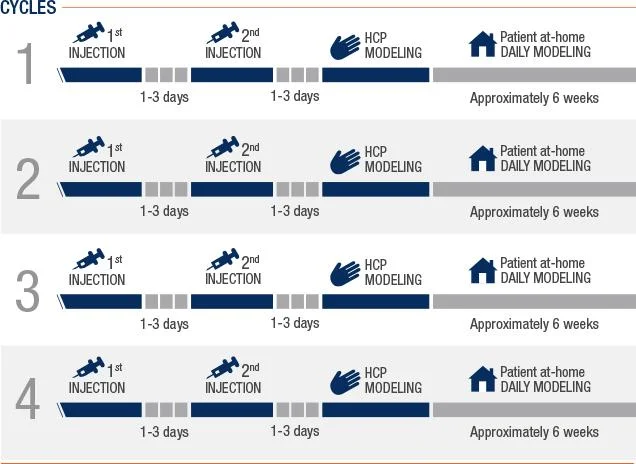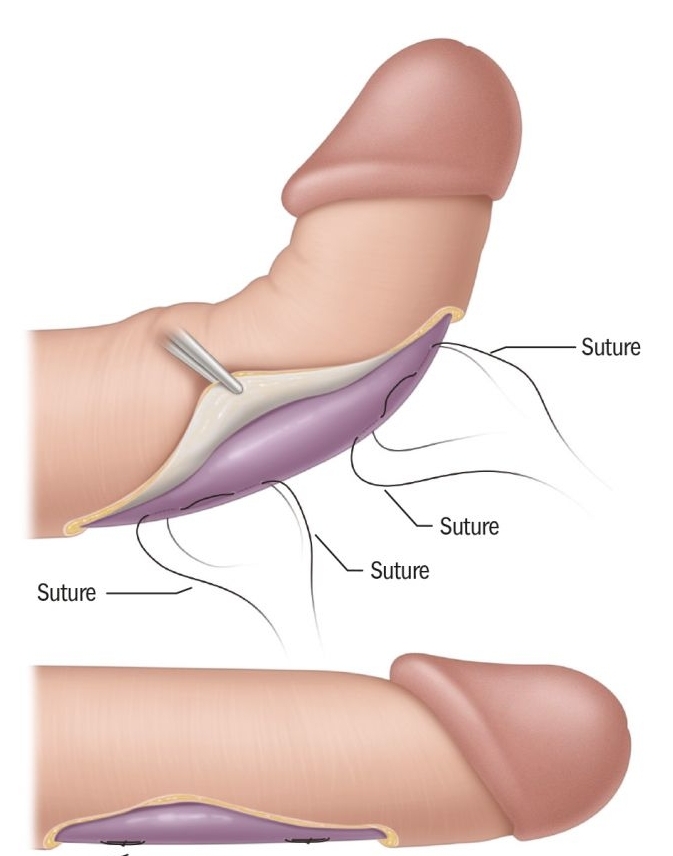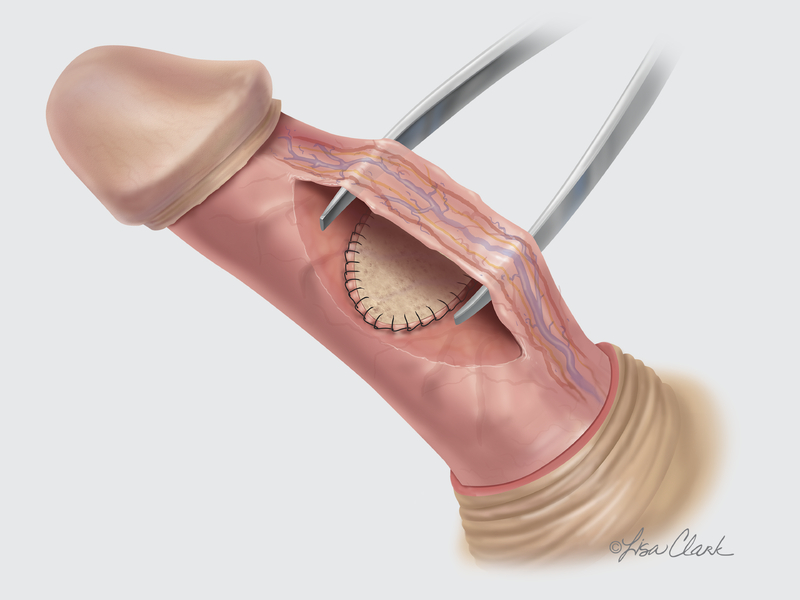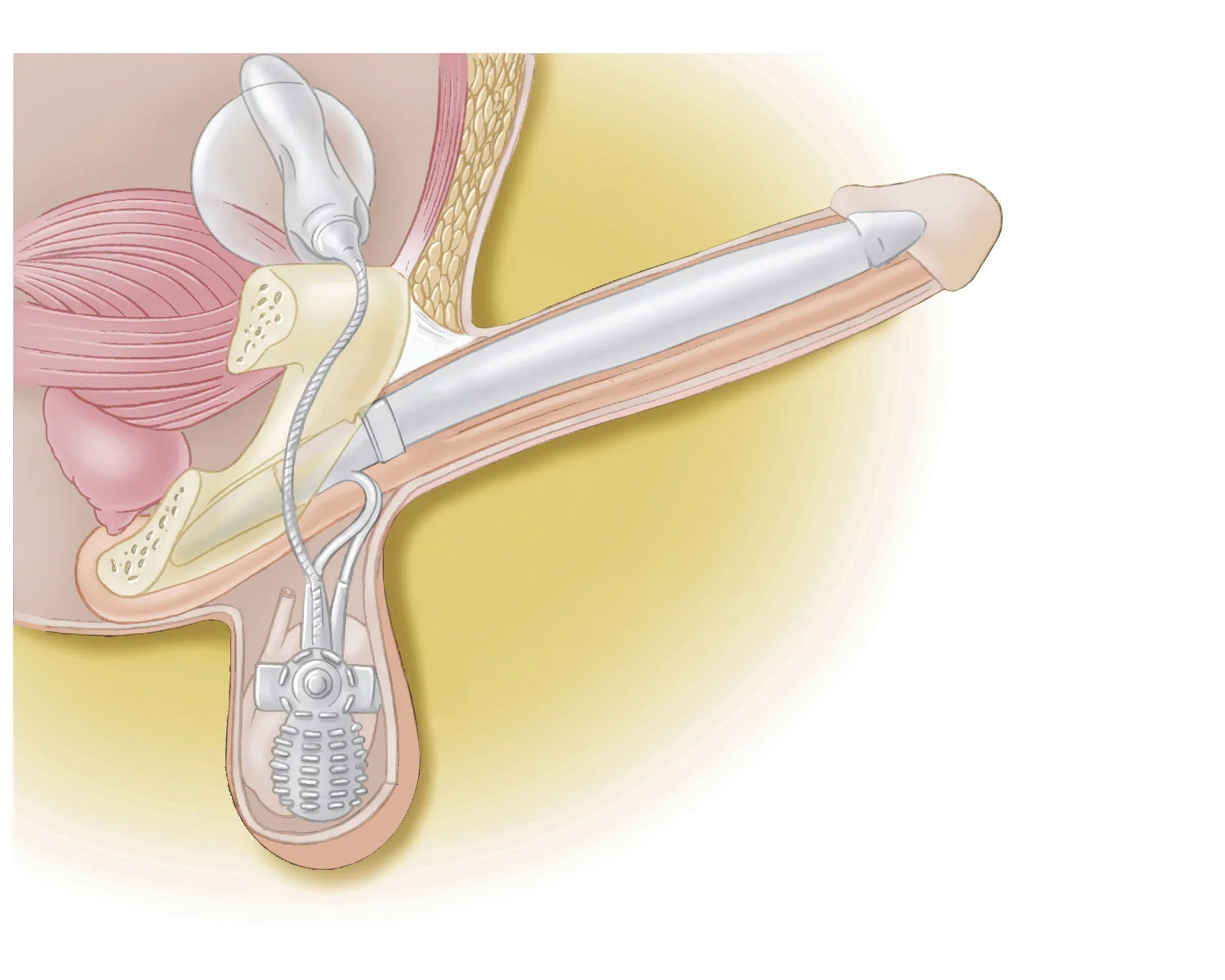Peyronie’s Disease
Introduction to Peyronie’s Disease
Peyronie’s disease is an inflammatory, benign condition of the penis which causes curvature, pending, or shortening. A plaque, which is a fibrous scar, develops within and/or over the erectile bodies and leads to contracture. Men may feel a hard lump or area of plaque along the shaft of the penis. This may cause pain, and the degree of penile curvature may cause difficulty with sexual activity, psychological stress, and/or erectile dysfunction.
Anatomy
A plaque forms along the erectile bodies, causing contracture. The contracture leads to shortening along the same side as the plaque. This ultimately leads to curvature because the plaque cannot stretch evenly. If there are two plaques on opposite sides, there may be an hour-glass deformity of the penis or even shortening of the penis. The plaque forms in two phases: 1) the immature or acute phase, and 2) the mature or chronic phase. The immature phase is when the plaque first forms, can be associated with pain, and may last 12 months whereby the plaque stabilizes. The mature phase is when the acute inflammation subsides, pain resolves, and there may be some worsening in the degree of curvature. The degree of curvature must be maintained for at least 6 months to be considered stable.
Causes of Peyronie’s Disease
The causes of Peyronie’s disease is not currently know. Some believe it results from a traumatic event or injury to the penis which leads to scar formation and development. We do know that Dupuytren’s contractures (a scar formation disease in the hands that leads to finger contractures) is also associated with Peyronie’s disease. This suggests there is an underlying genetic component of the disease.
Symptoms of Peyronie’s Disease
Peyronie’s disease can be extremely debilitating and cause stress on relationships. Men may feel symptoms of hopelessness, embarrassment, and frustration. Physiologic symptoms may include pain during the acute or immature phase, along with varying degrees of penile curvature.
Work-up and Evaluation
A complete history and physical exam is the first step in the work-up of Peyronie’s disease. We encourage patients to bring in pictures of their erect penis in order to provide clear documentation of the extent of curvature. The location of the penile plaque will be evaluated. In some instances, an artificial erection may be induced with a penile injection to better evaluate the plaque and curvature.
NonSurgical Treatment for Peyronie’s Disease
Oral Agents. Medications that have been found to have an anti-scarring effect in the animal models of Peyronie’s disease include pentoxifylline and amino acids such as L-arginine and L-citrulline. Unfortunately, these medications have limited benefit. In fact, some of the PDE 5 inhibitors (Viagra, Cialis, Levitra) have also been suggested to have beneficial anti-scarring effects. Other medications have been used, including Vitamin E and Potaba, but results have been poor.
Injections. Xiaflex is the first (and currently only) FDA-approved treatment proven effective for Peyronie's disease in men with a palpable plaque and a curvature deformity of 30 degrees or greater at the start of the treatment. Xiaflex is an enzyme produced by the bacterium Clostridium histolyticum, which breaks down collagen. Xiaflex is an injection that is given by Dr. Osterberg into the penile plaque in a series of up to 4 treatment cycles (8 injections). Following the treatment cycle, Dr. Osterberg will teach you how to perform penile modeling or stretching at home to help break up the plaque.
Standard Xiaflex Injection Schedule
Traction devices. A traction device may be tried in men with greater than 60° of curvature. However, the device must be worn at least 6 hours per day for several months to see any results.
Surgical Options for Peyronie’s Disease
If after a period of 6 to 12 months, patients are unhappy with oral or injection therapies, surgery may be indicated. A detailed discussion with Dr. Osterberg will be had to review all treatment options. You must be in the mature or inactive phase of the disease to be considered for surgery. Surgical options are:
Plication. Surgical penile plication is performed by making the longer side of the penis shorter in order to correct the degree of curvature. In order to perform this, non-absorbable stitches are placed on the opposite side of curvature in the erectile body of the penis to produce symmetric shortening and an overall straight penis. Plication procedures are reserved for men with curvature less than 60 degrees and adequate erectile function.
Grafting. An alternative to penile plication surgery is removal of the plaque and replacement with an artificial graft. In doing so, there is less risk of penile shortening but potentially an increased risk of erectile dysfunction postoperatively. Many different types of graft materials can be used, including grafts from inside the mouth, porcine small intestine, or bovine pericardium. Grafting techniques are the preferred treatment option for men with normal erectile function and curvature greater than 60 degrees.
Penile Prosthesis. If your degree of curvature is severe and/or you experience erectile dysfunction, a 3-piece penile prosthesis may be recommended as a treatment for Peyronie’s disease. Using the rigidity of the penile implant combined with penile manipulation and mottling, the degree of curvature can be drastically improved with a penile implant.








